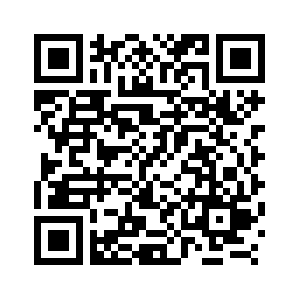by Xinhua writer Liu Si
BEIJING, June 9 (Xinhua) -- The U.S. Route 66, a century-old highway spanning from Chicago's Lake Michigan shores to the Pacific coast in Santa Monica, California, is known as the "Mother Road" under the pen of American writer John Steinbeck in his Pulitzer Prize-winning novel "The Grapes of Wrath."
The road symbolized mobility, freedom, and the American Dream, aiding many towns' economic recovery during the Great Depression. However, by the 1980s, a new national highway system bypassed most of Route 66, severing the economic lifelines of communities along the path and leaving the "American Dream" no more than a relic of nostalgia.
The highway has always been a mirror held to reflect what goes on in the nation, said American journalist Michael Wallis.
HIGH-COST AMERICAN DREAM
A typical American Dream is often depicted as a married couple with two children, owning a home, a car, and a pet. It's a vision of upward mobility, economic success, and a comfortable lifestyle featuring marriage, children, housing, and education.
Yet, the cost of achieving this dream is far beyond the lifetime earnings of most Americans.
A study released by GOBankingRates in May shows that a household would have to spend more than 150,000 U.S. dollars a year to live the dream in 29 of the 50 states. According to the report, the American Dream is the least expensive in Mississippi, at 109,516 dollars. However, the median household income in Mississippi is just under 53,000 dollars a year, enough for only half of the American Dream.
A report released in December last year by the financial website Investopedia estimates the lifetime cost of the American Dream is 3.4 million dollars, while the average lifetime income of an American is about 2.3 million dollars.
"The reason that the American Dream was one of our most-searched terms last year is that people thought it was further and further away from them," said Caleb Silver, the website's editor-in-chief.
NEW AMERICAN PESSIMISM
"Sadly, the American Dream is dead," said Trump in June 2015 when he announced his presidential run.
Indian-American entrepreneur Vivek Ramaswamy echoed Trump's point during the first Republican presidential debate in August last year, saying: "I am deeply worried that that American dream will not exist for my two sons and their generation."
While presidential candidates' words are meant to woo voters, their concerns reflect the anxieties of many Americans.
The anxiety is discernable in the 2023 American Values Survey jointly conducted by the Public Religion Research Institute and the Brookings Institution: More than six in ten Americans say they are very or somewhat worried about being unable to afford health care, housing, or everyday expenses such as groceries or gas, or get a job that pays a living wage. In addition, more than three-fourths of Americans believe that the country is going in the wrong direction.
In recent years, the American Dream has become more elusive than ever. The 2008 financial crisis saw approximately 3.8 million Americans unable to make mortgage payments and subsequently lost their homes to foreclosure, and 2.6 million Americans lost their jobs.
Soaring prices of consumer goods have given heavy blows to Americans' livelihoods. Federal Reserve data showed that nearly two-thirds of U.S. adults were worse off because of it, and roughly one in six couldn't pay all their monthly bills.
To make matters worse, wage growth in the United States has not been keeping up with inflation. According to a new Bankrate survey in November last year, three in five workers say their incomes haven't kept pace with inflation over the past 12 months.
No wonder pessimism about the American Dream has grown across groups, particularly young Americans. A survey by ABC and Ipsos said that barely more than a quarter of Americans say the American dream still holds true -- about half as many said so 13 years ago.
"In its place is a crisis of confidence, a pervasive sense among most Americans that our best days are behind us, and that our problems are multiplying faster than we can find solutions for them," said an article in the Atlantic.
DREAM FOR ELITES
The American Dream is often considered synonymous with equality, freedom, and democracy. Its earliest version dates back to the "Declaration of Independence" at the founding of the United States in 1776.
At the Constitutional Convention that laid the foundation for the entire American political system, all the attendees were either social elites or wealthy individuals.
American historian Charles Beard argued in his book "An Economic Interpretation of the Constitution of the United States" that the U.S. Constitution was adopted to protect the rights and interests of the wealthy, upper-class members of society.
Sadly, the American Dream remains a dream for elites to this day.
A study by the Pew Research Center in 2020 showed that the growth in income in recent decades has tilted to upper-income households, while the U.S. middle class, which once comprised the clear majority of Americans, is shrinking.
From 1970 to 2018, the share of aggregate income going to middle-class households fell from 62 percent to 43 percent and the share flowing to lower-income households inched down from 10 percent in 1970 to 9 percent in 2018.
These trends in income reflect the growth in economic inequality overall in the United States in the decades since 1980, the study said.
According to new data from the Federal Reserve in March this year, the wealth of the top 1 percent hit a record 44.6 trillion dollars at the end of the fourth quarter last year.
"We have drifted from our ideals of 'equality, liberty, opportunity and democracy'," and the United States, beginning in the mid-1970s, "entered a dark new economic era," said David Leonhardt, Pulitzer Prize winner and New York Times columnist. ■



